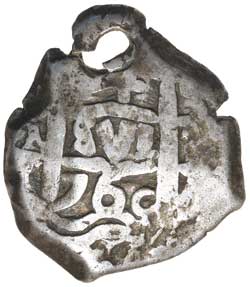

They were the smallest, almost worthless coins still in circulation in the time of Jesus. Lepton) were the low-quality bronze coins minted by the Hasmonean Dynasty in the 1st century BCE. Bronze lepton, Inverted anchor/Sun-wheel, 103-76 BCE, Alexander Jannaeus, Hasmonean Dynasty, Judea. There are no definite answers to this phenomenon, yet some believe that money was and still is outside that code, which in general is an intriguing notion. The most intriguing fact about these shekels however is that they depict Melqart, the patron deity of Tyre, a possible contradiction to the Jewish law regarding graven images as well as the question of the coins’ holy purpose. This is confirmed by a 2nd century compilation of the Jewish oral law, which states, “Silver, whenever mentioned in the Pentateuch, is Tyrian silver” (Tosefta Ketubot 13, 20). Last, the same shekels are believed to be the infamous “30 pieces of silver” paid from the Temple treasury to Judas for his betrayal of Jesus (Matthew 26:14-15). For example, Roman coinage was generally only 80% silver while the Tyrian silver was 94% or more pure.
#Lepton coin full#
The worshippers used the moneyers’ services to exchange their baser common currency for the high-quality silver shekels, and it can be safely assumed that the money changers’ tables were full of these coins. The money changers were in the Temple to convert various currencies into one standard coinage, the Tyrian shekel, that was used for the payment of the already-mentioned Temple tax. The story includes a discussion between Jesus and Peter about payment of the taxes levied by the “kings of the earth,” and the miracle according to which Peter finds a stater (στατῆρα), which equals four drachms or a shekel, in the mouth of a fish, which is then used to pay the Temple tax for both of them.Īdditionally, the story of Jesus and the money changers indirectly implies the presence of Tyrian shekels (Mark 11:15-17).

When it comes to the full shekel, the most prominent New Testament reference is in the account of Peter finding the coin for the tax payment in the mouth of a fish (Matthew 17: 24-27). As a Jewish male over 20, Jesus had certainly paid the annual tax for at least a decade (Matthew 17:24). Later on, the weight measurement was converted to a half-shekel coin, and according to the Jewish historian Josephus, the annual monetary tribute of the half-shekel was equivalent to two Athenian drachms (The Jewish War, 7.6.6).

The payment is first mentioned in Exodus in the Old Testament, which states that every Jewish male over 20 years of age has to pay a tax to the Temple in Jerusalem, originally half a shekel weight equal to twenty gerah (30:11-16). The half shekel is referred to in the New Testament, specifically in Matthew’s passages on the Jewish Temple tax (17:24-27). The most fascinating Phoenician shekels, minted in the city of Tyre 126/5 BCE-66/67 CE, were of pure silver, true weight, and came in two denominations: half shekel (8g) and full shekel (14g).

Silver shekel, Melqart / Eagle, 80-79 BCE. However, there are four coins directly linked with Jesus in the New Testament: Phoenician shekel and half-shekel, Jewish Hasmonean lepton, and Roman denarius. He most likely handled silver, bronze and gold coins, both local and from the neighboring regions – Jewish, Greek, Roman, Syrian, Nabatean, Egyptian, all present in Judea at the time. The exhibition is centered on the four coins directly linked to historic Jesus.Īccording to the Gospels, Jesus was well aware of the importance of money. Jesus Christ on a gold tremissis issued by the Byzantine Emperor Justinian II, 685-695. The journey ends with Europe’s Medieval Christian silvers and the almost forgotten 7th century Islamic coinage with the frontal image of Caliph Alb al-Malik. It begins with the Persian Imperial coinage – the only coins referenced in the Old Testament, and showcases numerous stunning examples, such as the renowned Phoenician shekels, rare Jewish YHD issues, historic coins of Pontius Pilate and the Jewish-Roman Wars, culminating with the very first Christ coins from Byzantium. “Coins of Jesus” examines the world’s religious and cultural history through ancient money.


 0 kommentar(er)
0 kommentar(er)
